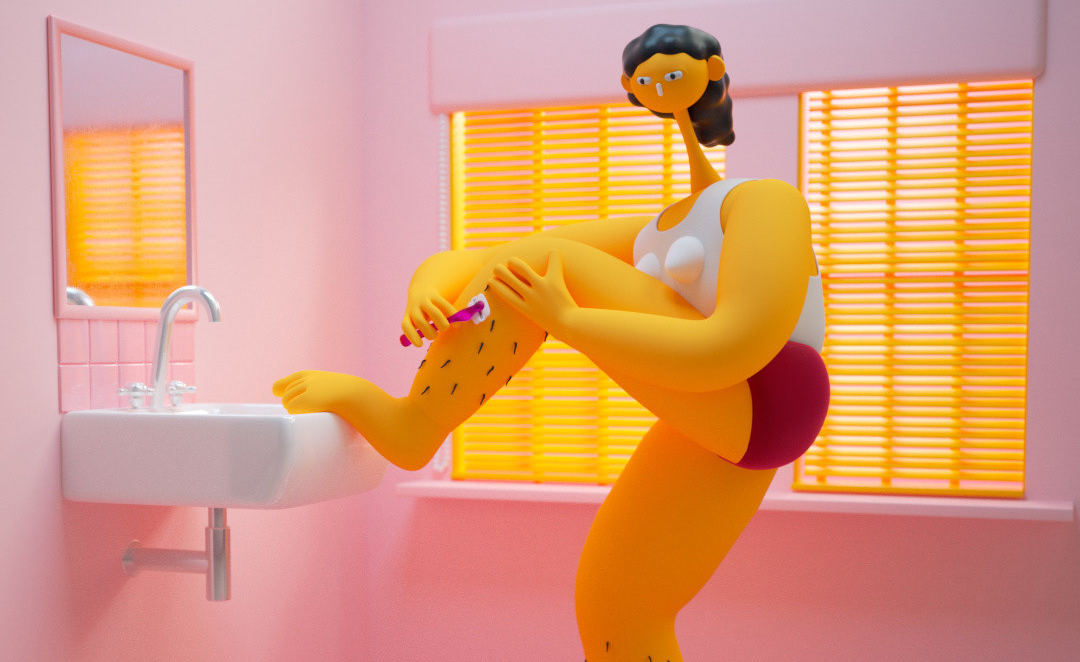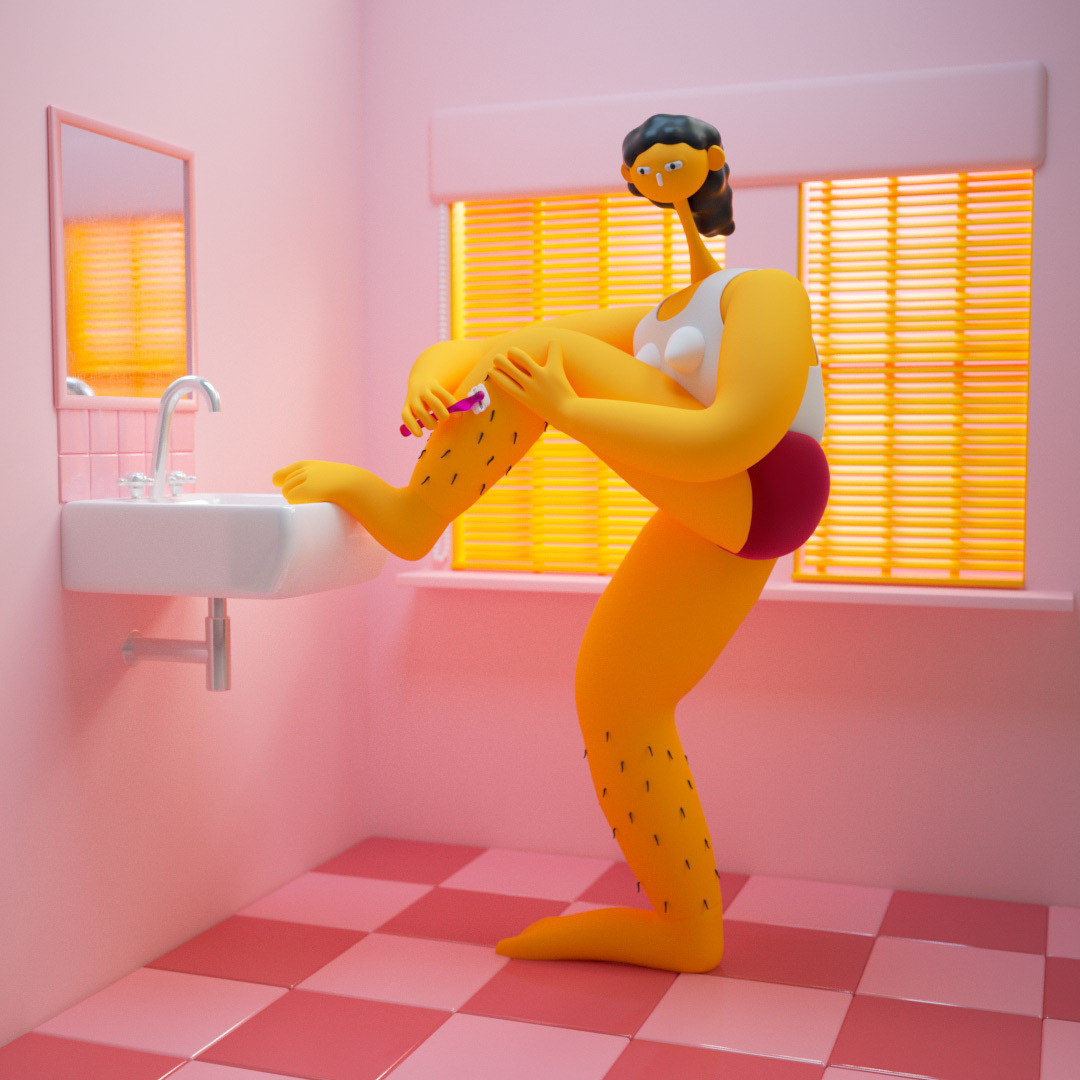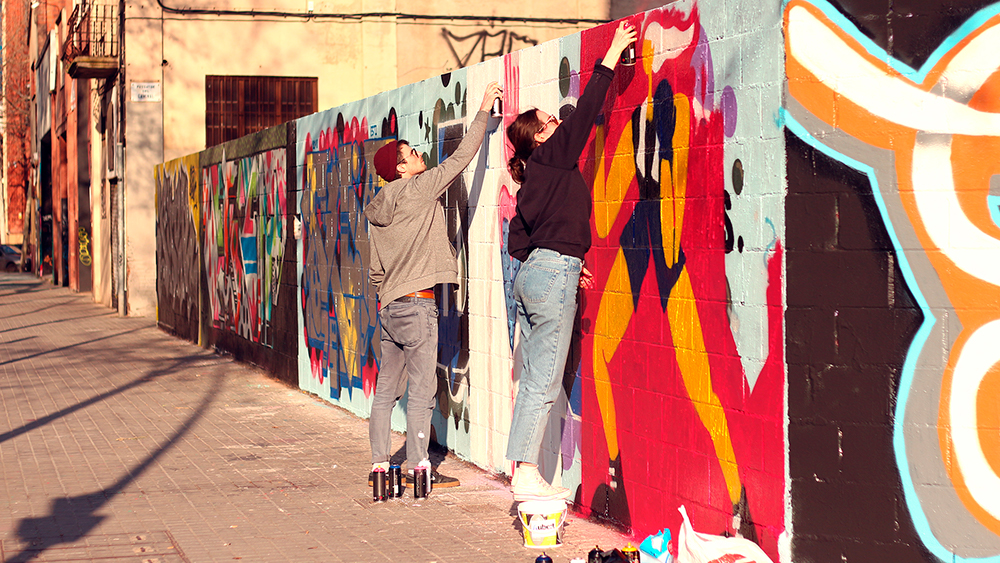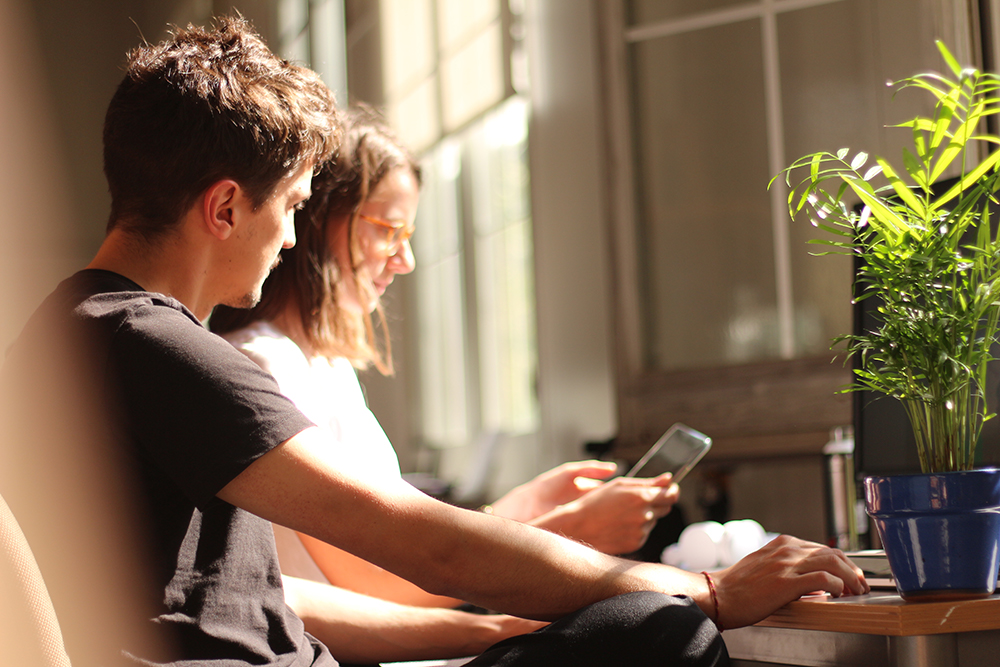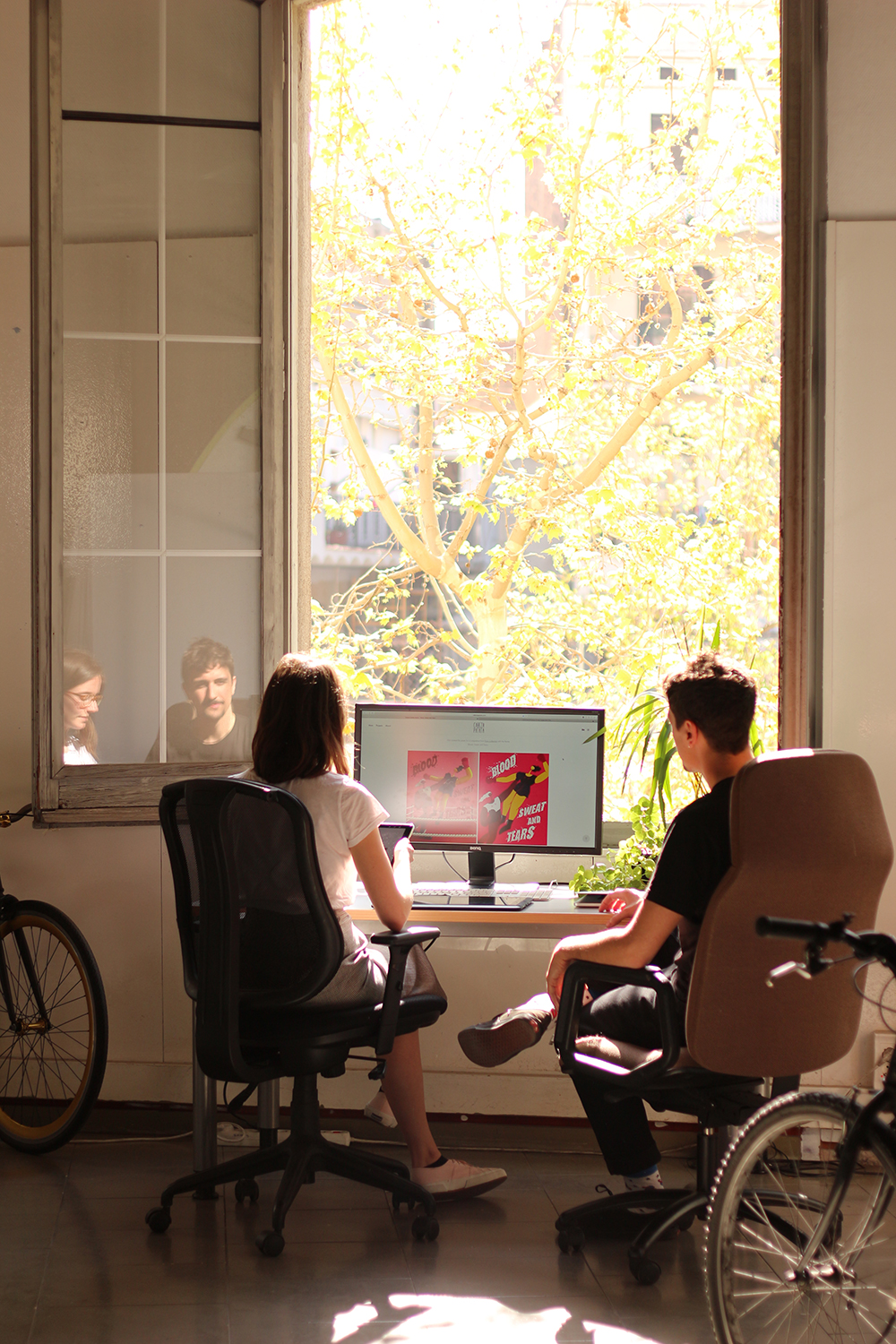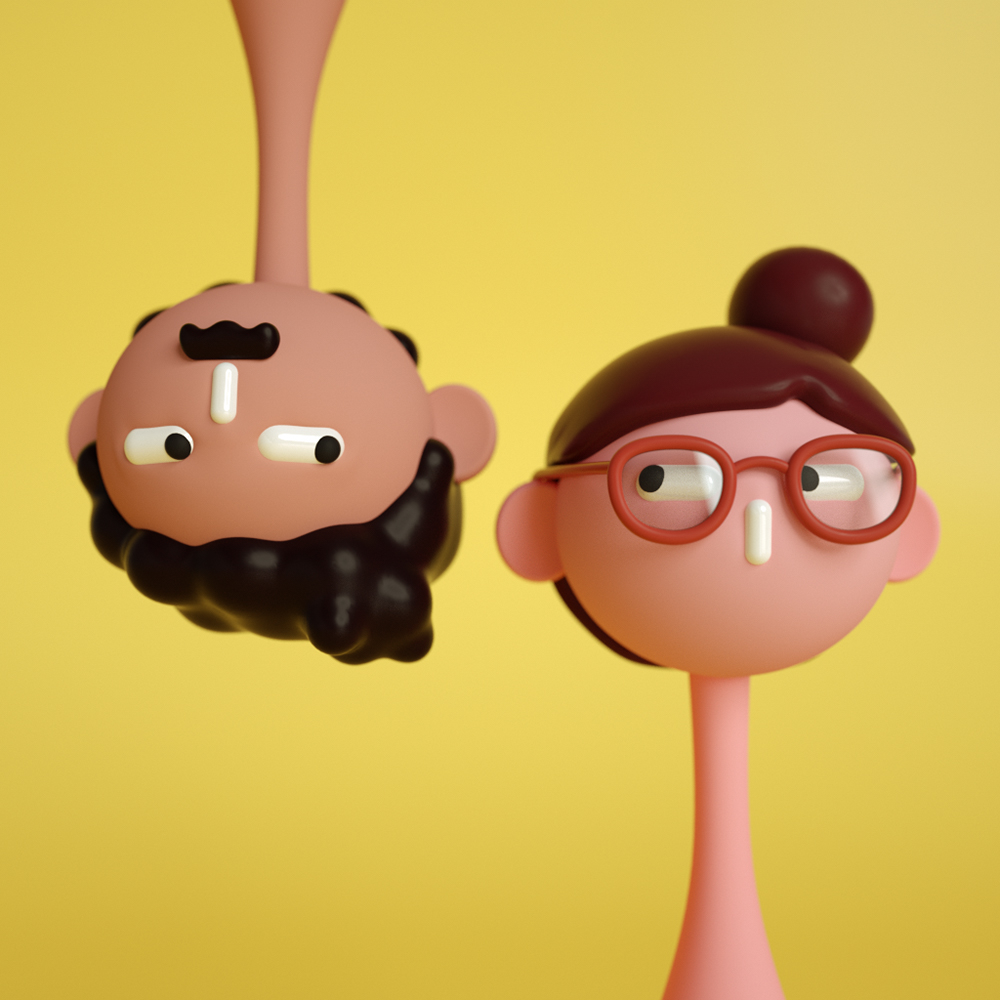Meet Cabeza Patata, the collaborative duo Katie Menzies and Abel Reverter

Meet Cabeza Patata, a collaborative 3D duo that combines the talents of illustrator and craftswoman Katie Menzies, and 3D artist and animator Abel Reverter. Today they open up about their work and creative process, and why they joined forces to craft a playful 3D world.
Can you start by first telling us a bit about yourselves?
Katie is a craft obsessed, multilingual, North London girl. A zumba enthusiast, who makes all her own clothes, is super organised and likes to keep everything tidied away in its little place. Abel is a computer screen obsessed technical whizz, who loves living in a different city every year. He dreams of being a professional footballer, and of having an English accent but knows neither of those things will ever happen. Together they are Cabeza Patata!
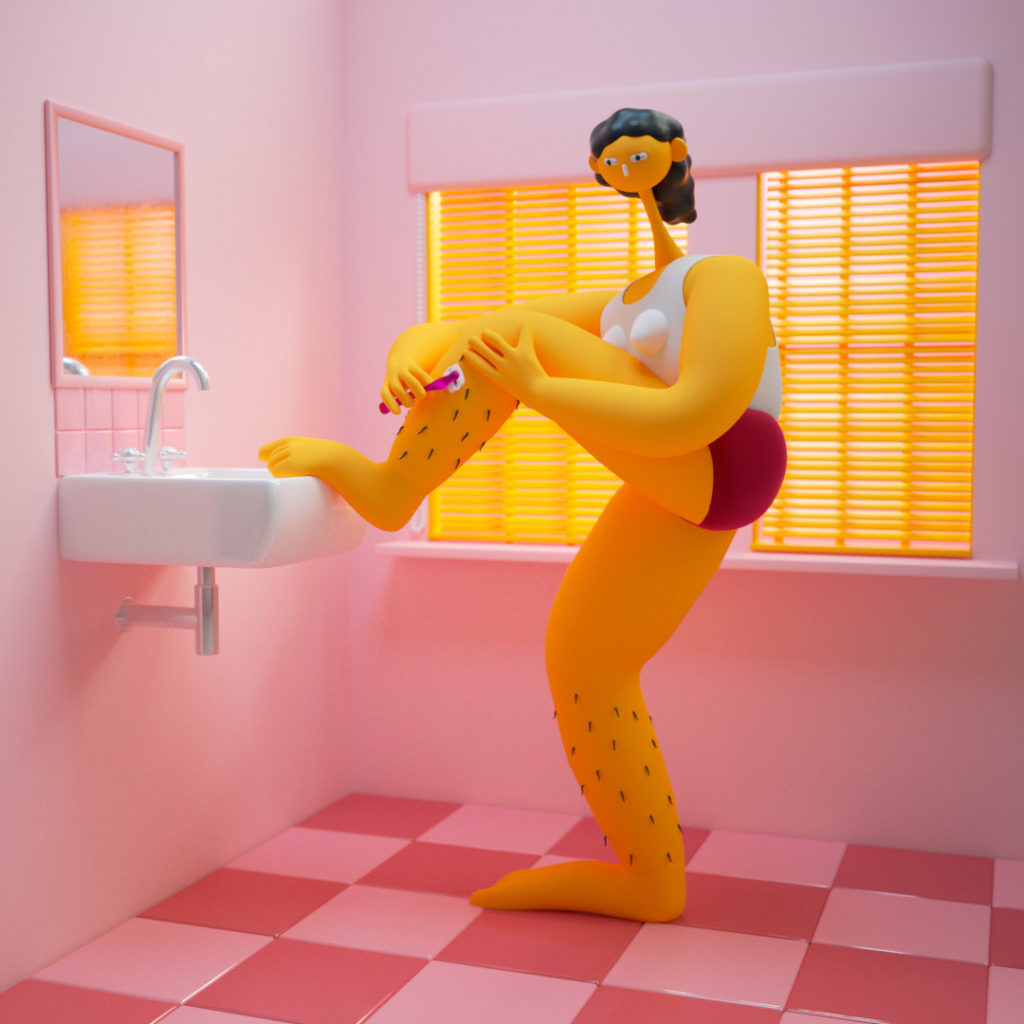
We are a couple and we live together, so we end up thinking about Cabeza Patata pretty much 24/7, whether we’re having cornflakes in the morning or out on a Friday night!
How did you first start working together? Where does the name Cabeza Patata come from?
Katie & Abel have always been doing various projects together. Their first collaboration was a series of postcards drawn for each other, when they first met but were living in different cities. Cabeza Patata was an unplanned collaboration, that just happened to lead to something much bigger. One day Abel was playing with his fancy new computer and tried making a 3D character out of one of Katie’s illustrations. It looked fairly basic but they saw the potential and since then, haven’t stopped.
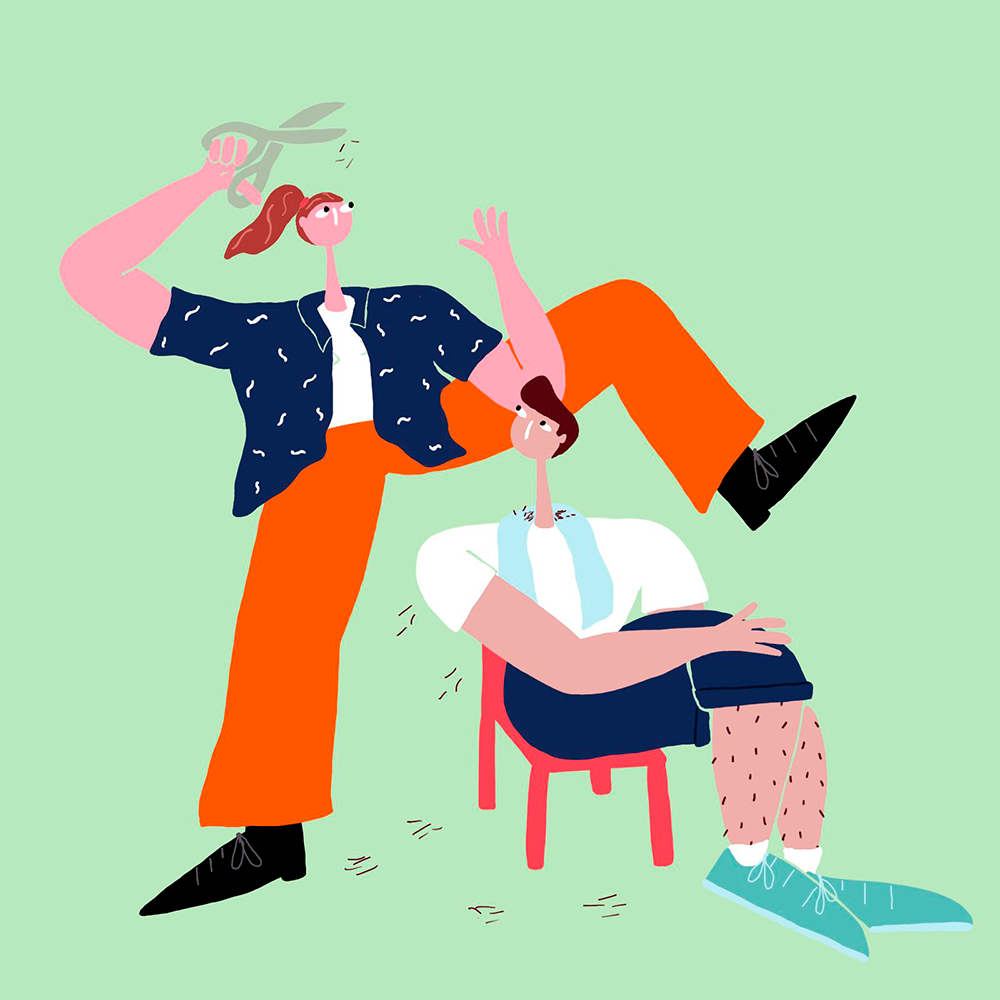

What does a typical day look like for you?
Breakfast is our version of a morning meeting; a definite bonus of living and working together. Before we’ve even left the house we know the plan for the day. Living and working together means that we constantly learn from each other. We don’t want to keep our skills separate. It’s much easier and more natural if we both understand the entire creative process. Our recent addition of digital clothing for the characters is a good example of this. Katie’s knowledge of clothes-making is crucial to making clothes fit our characters, with their thin necks and big bodies. Where Abel’s willingness to check tutorials and find technological solutions means together we have the perfect combo.
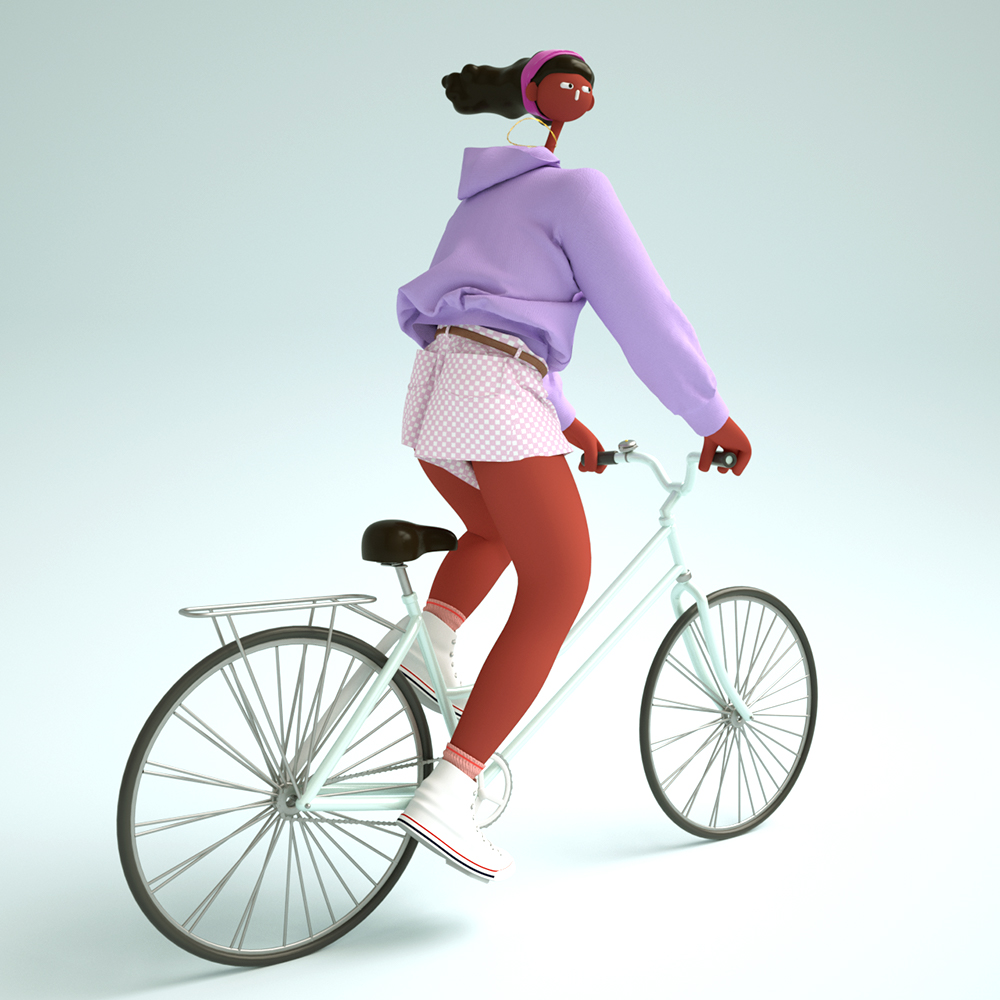
How do you typically approach a new project?
From the beginning we have applied a ‘don’t look back’ approach. Make something, publish it and move on. Because of the repetition of the character style, we are accumulating details which are improving with each illustration. The clearest example of this is in the body shapes. They have changed from a geometric beginning, to having a more realistic, stronger structure, which is more in tune with our message of depicting real women. Because of this way of working, we’re excited to see how the characters will continue to evolve. 3 years feels like ages away, but we have the ultimate goal of making a short film by then. We already have the idea but we need a lot of practice to dominate the style and, of course, the animation.

Can you talk us through your creative process?
Everything starts as a 2D drawing on the iPad, with more or less detail depending on the project. This helps us choose the positioning and the colours before starting the 3D composition. It also allows us to keep a more graphic and cartoony style before thinking about the logistics of how it has to work in the 3D ‘real’ world. Sometimes perspective is broken in the 2D illustration and we have to put things on tables and at weird angles to get the same result in 3D.
The second stage is the modelling of the characters and scenery. We always use the same heads as the personality is often added through wacky hairstyles. We are trying to make a varied range of body shapes that represent everyone. Sometimes we see people tag friends in our instagram posts because they look like one of the characters who is not usually represented in illustration.
We used to jump straight from here to adding textures and lighting, but now we’ve added an extra step with the clothes! Using real clothing patterns and a digital sewing machine we create digital versions of real outfits. We can choose anything from cotton to denim, making the garments fit our characters well. We’ve even made some of our own clothes in Cabeza Patata form.
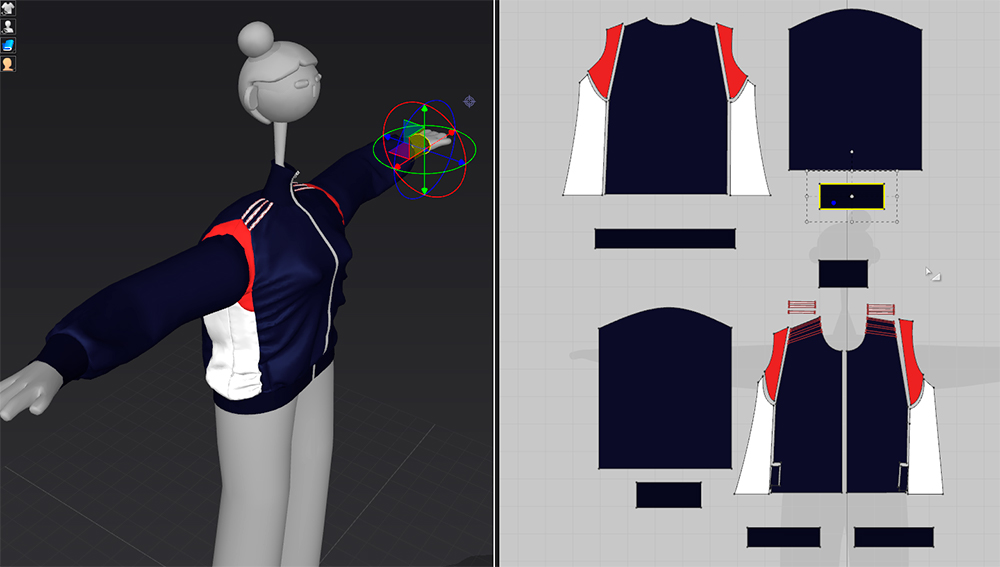
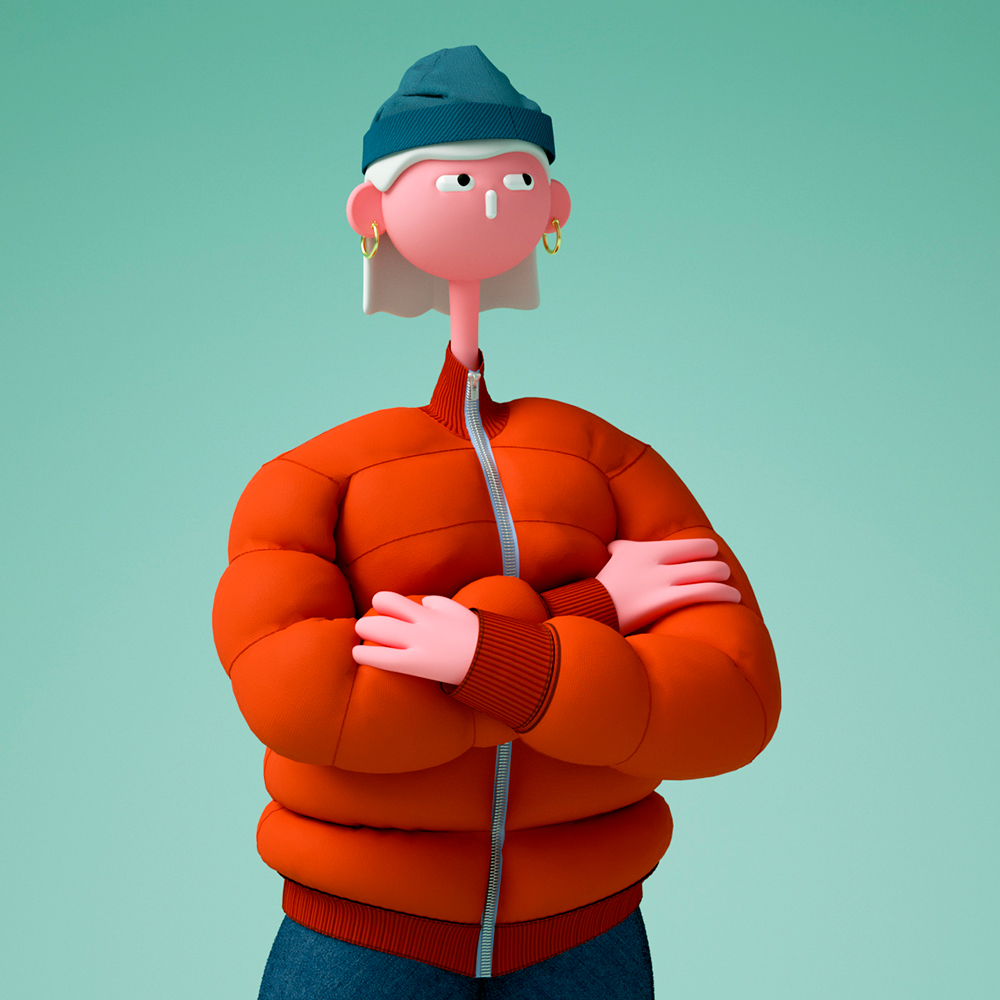
We’ve read that you live and work in Barcelona – what’s the studio like?
Our studio is a huge disused clothes factory by the beach in the Poble Nou area of Barcelona. We share it with a bunch of other creatives, a lot of bicycles and a few surf boards. We all spend half our time working and the other half playing Virtual Reality. This means there are always ideas flying around the studio, and people giving advice. We sit at a desk with 3D masters, Six n Five, so we can easily ask them technical questions instead of getting into Youtube tutorials with weird electronic background music. It also means that, even if one of us is having an off day with Cabeza Patata, there’s always another project to jump into.

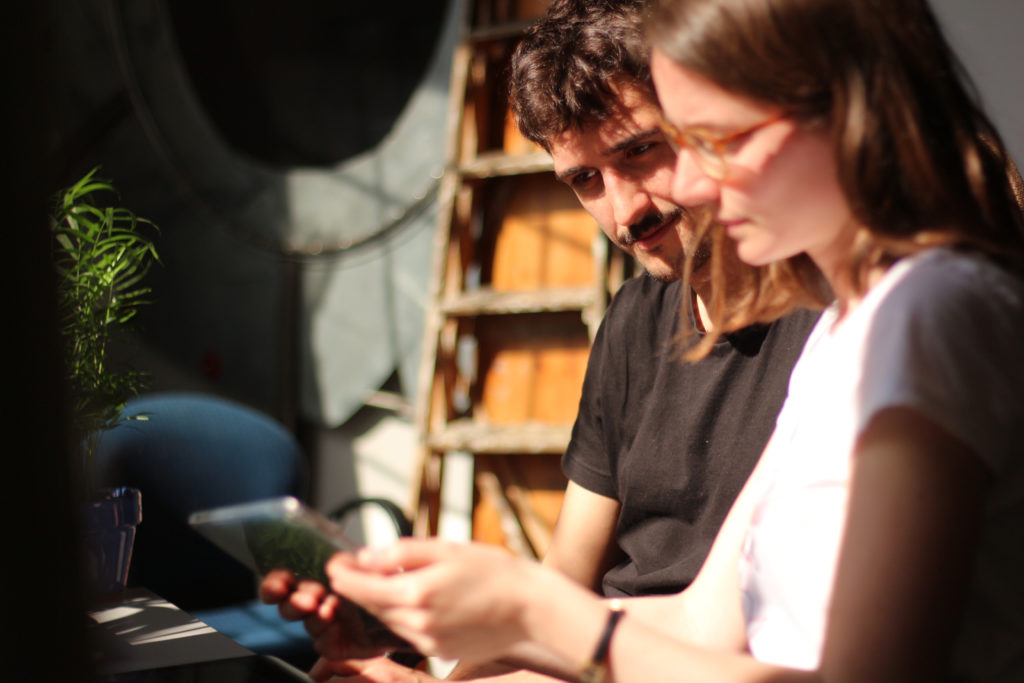 Where do you get your ideas and inspirations from?
Where do you get your ideas and inspirations from?
Our inspirations come mainly from the 2D illustration world, from artists such as the Get It Girl Collective, Seba Curi, Moth Collective and Mafer López. This style focusses on female empowerment and diversity and hasn’t been explored much yet in 3D. In terms of creative duos, however, our top inspiration could only be Jay Z and Beyonce.
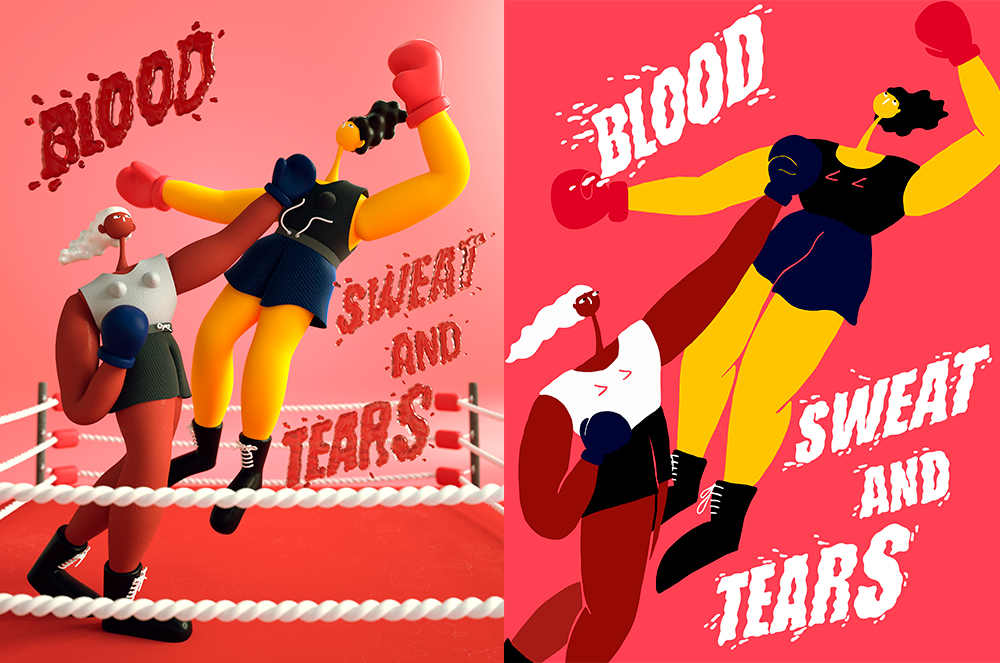
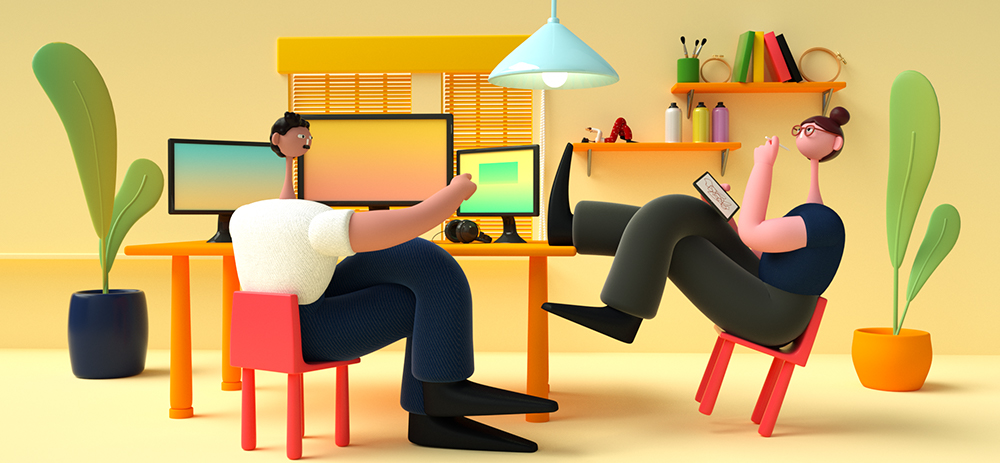
How do your individual creative skills and backgrounds combine to make the work in the studio?
Many of our creative practices, such as Katie’s graffiti, are now included in Cabeza Patata. Abel’s background in Motion Graphics also means he can now apply his skills to character animation. Cabeza Patata is not limited to traditional mediums, we see it more as a recognisable style with a strong message that can be used everywhere. We have printed our characters as clothing patterns and even have a Cabeza Patata pillow! The way the media world works now means that there’s so much opportunity for this; one single campaign might include a series of short animations on your instagram feed, a piece of graffiti on the wall you pass going to work, or an ad in the magazine you read when you arrive.



